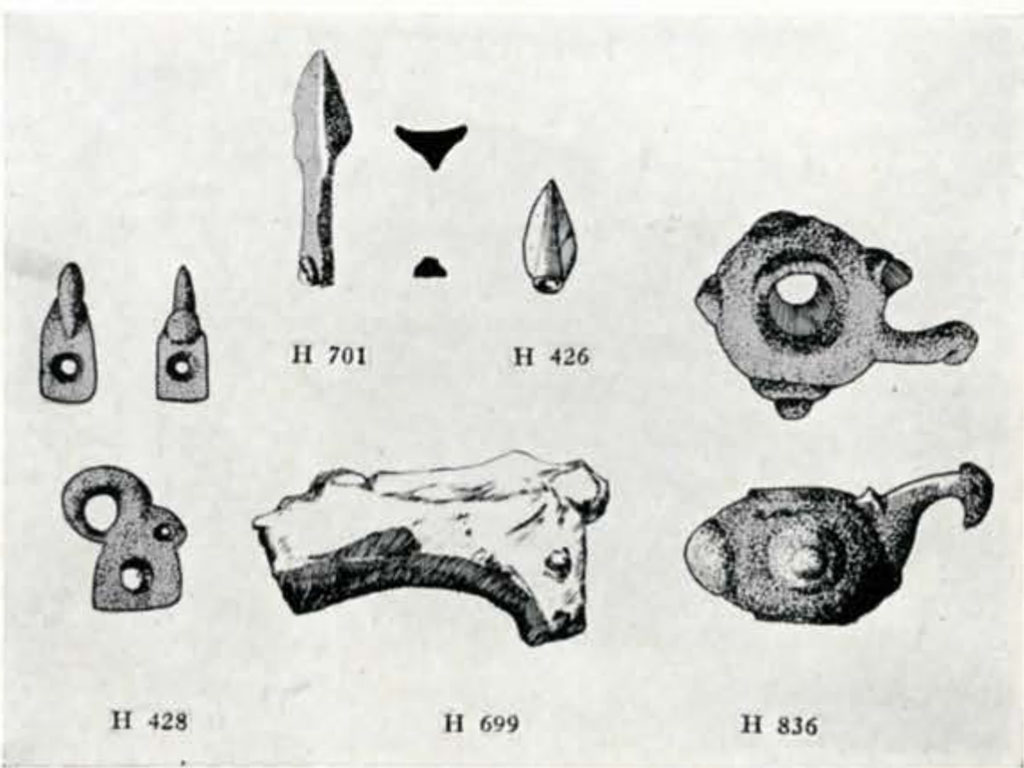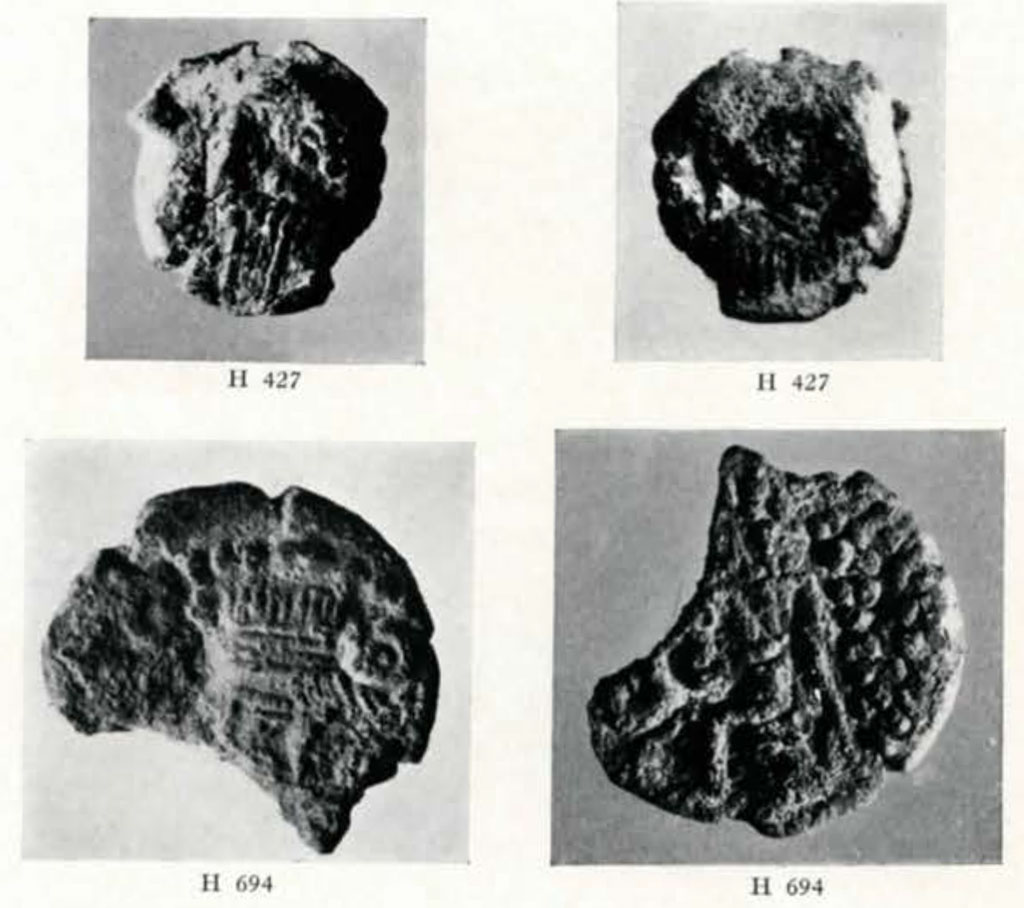[Plates CLVI-CLXIX]
We are convinced that the Damghan plain was settled rather continuously by towns or villages of varying importance; but at Tepe Hissar, instead of human beings, jackals and porcupines, foxes and chipmunks enjoyed an undisturbed existence for many centuries. The houses of the last Tepe Hissar people had long since crumbled down. Pilferers had probably carried off the wooden parts, valuable in this unforested territory. The weakened structures broke down and were leveled by the eternal northwest wind, and by the rain and snow of the winters.
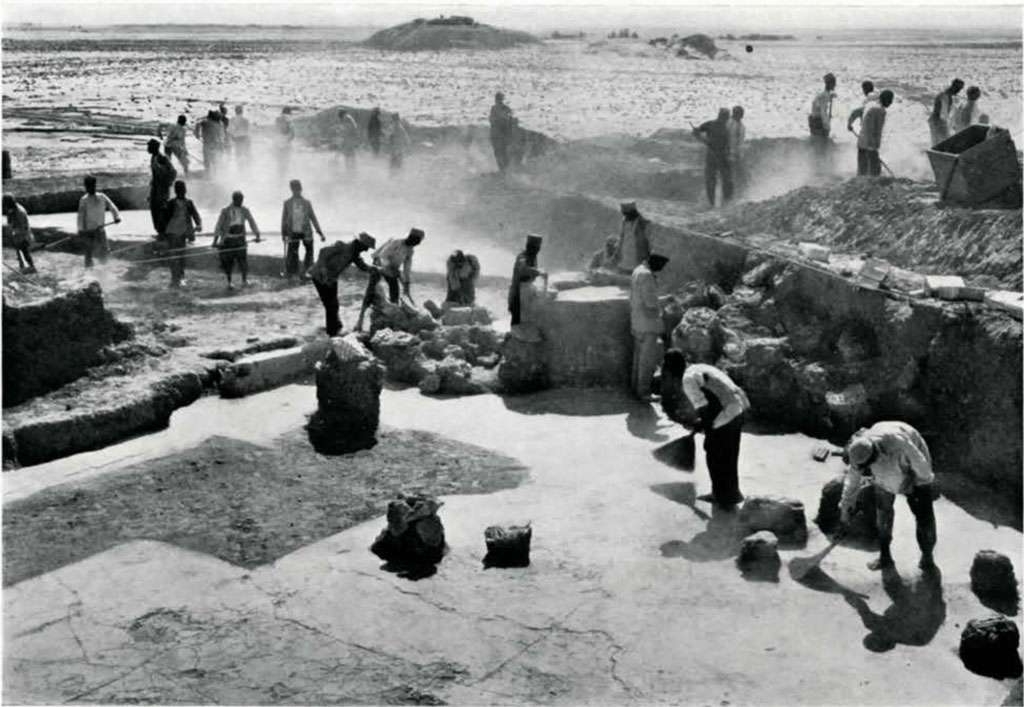
Image Number: 82925
About two thousand years had gone before people of an historic epoch, the Sasanian, occupied again a marginal spot of the mound area. Accord- ing to Prof. E. Herzfeld, the building to be described belongs to the earliest phase of this period, that is, to the second half of the third century A.D. It is a solitary palatial construction, while a small contemporaneous settlement extended perhaps from the palace site towards the northwest.
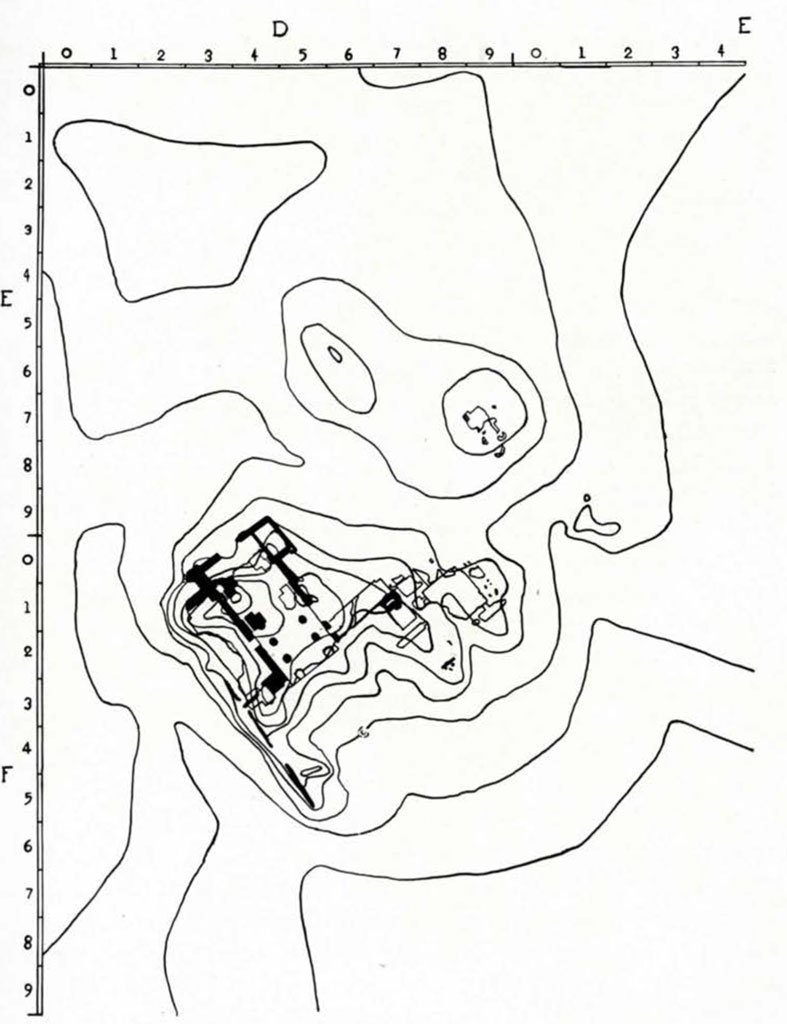
Image Number: 83045
A detailed description of the Sasanian Palace of Tepe Hissar will follow in the final report on our work. An extract will therefore suffice at the present time.
The palace complex oriented diagonally, northwest and southeast, consists of rectangular and square rooms and halls marked mainly by sharply outlined plastered floors and in some cases by sturdy wall remains of large-sized unbaked bricks.
An outside wall, partly indicated by wall fragments, presumably enclosed the entire building as well as its postulated park, and a pavilion situated in the northeast corner of the plan.
The focal section of the construction consists of a colonnade of three pairs of full columns and one pair of attached half columns leading to a square, and presumably domed, room opening into a smaller, rectangular enclosure with an exit through the northwest facade.
While we found remains of polychrome murals in purplish red, blue, carmine, white and ochre, the principal ornamentation of the building consisted of well modeled plaques and architectural details of gypsum. All plaques and certainly many other stucco ornaments were formed by moulds, as proved by the identity of the units.
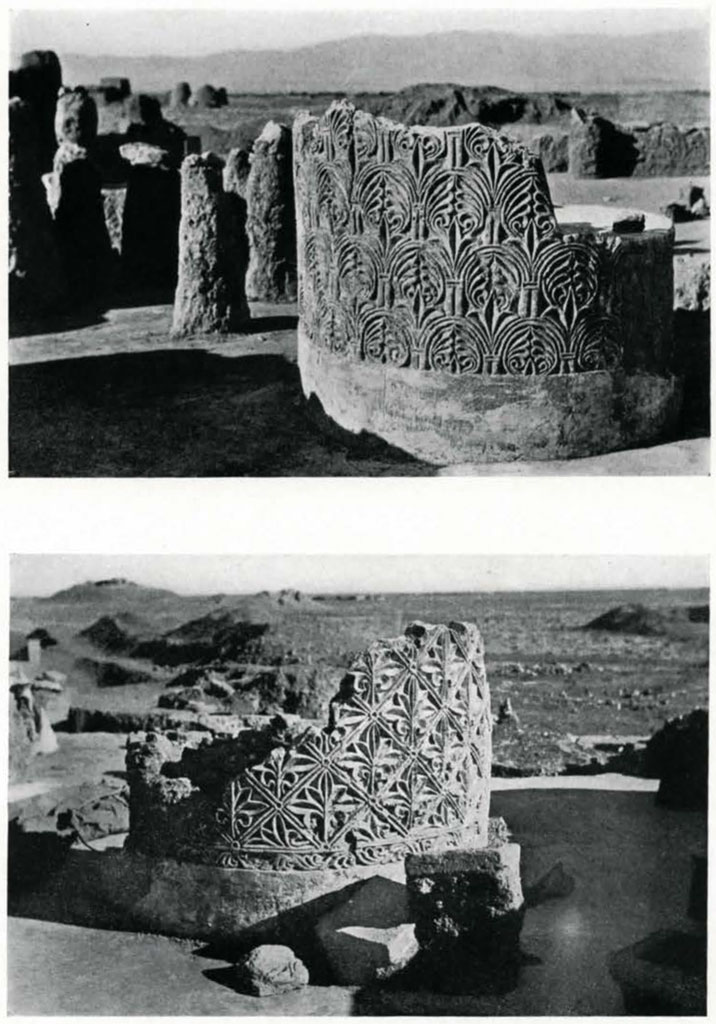
Image Number: 82950-82955
The plaques show a boar head in a beaded circle, a female bust in a square panel and a symbol composed partly of characters not occurring prior to the Sasanian period, as stated by Prof. Herzfeld. The symbols are again enclosed by a beaded circle, while the frame ornaments of all plaques vary. There are, finally, smaller plaques showing browsing or drinking stags and does. Small fragments of a fifth series suggest a bird pattern, but the principal element is not preserved.
These plaques, as well as the other stuccos to be described, deserve a more enthusiastic presentation than plain enumeration; but the reader may form his own judgment by means of the illustrations.
Near the southeast entrance to the ‘domed room’ we found the left side of a lion’s face, a large paw, and fragments of fur, modeled in gypsum. In the hypothetical restoration by our architecturally trained artist, I. Gerasimoff, those fragments turned into impressive guardians of the entrance, and stucco heads of ibex or moufflon found their places at other prominent points.
The restoration gives an idea of the beauty of the original structure, though it does not claim to be correct beyond a measure of probability. Certainty is only given by finding an object or element in its original position. Still it represents months of work. It is based on the survey of Mr. White, who had to plot every stucco fragment uncovered, and it was theoretically built up by Mr. Gerasimoff, who defined the former location of the ornaments and the elevations.
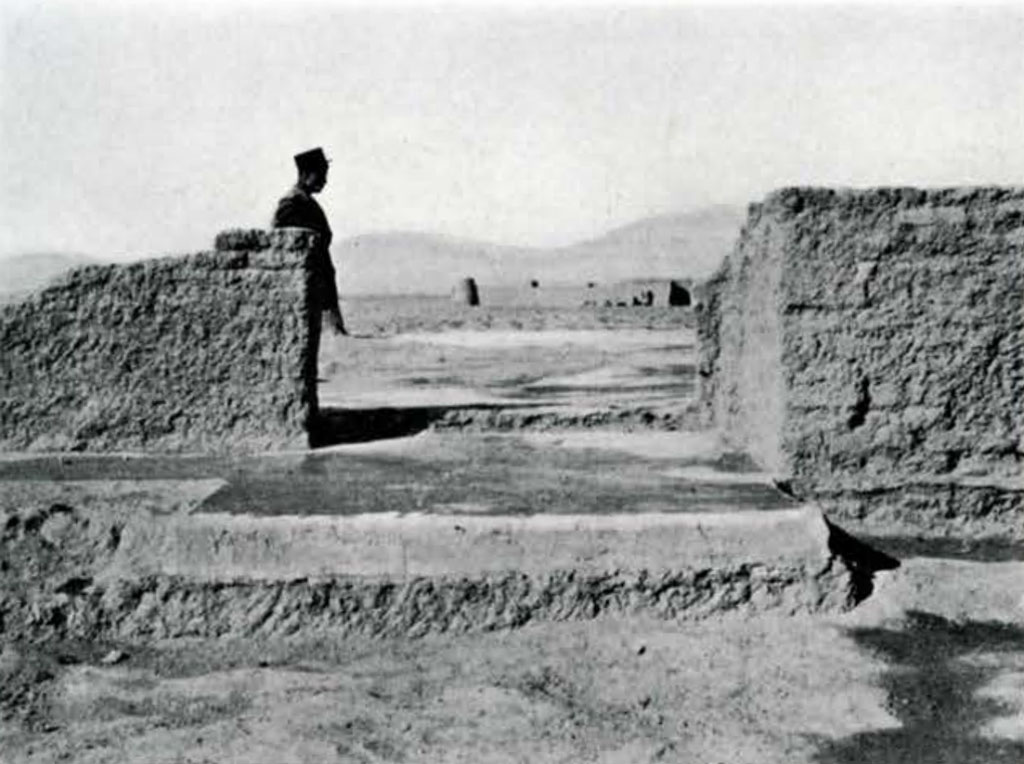
Image Number: 83059
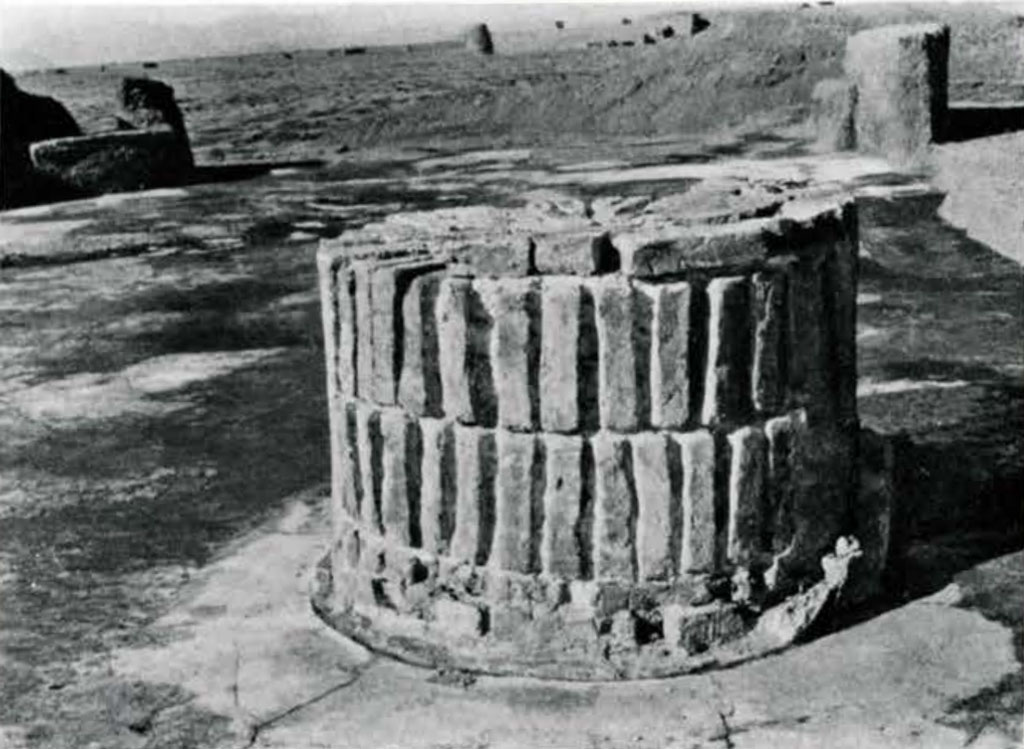
Image Number: 83060
The columns were impressively ornamented with carved stucco coating. The first pair shows a swastica pattern, the second is ornamented with filled lozenges, the third with palmettes in oval units, while no remains of the ornamentation of the fourth pair of half columns are left. The column capitals were ornamented with scaled designs.
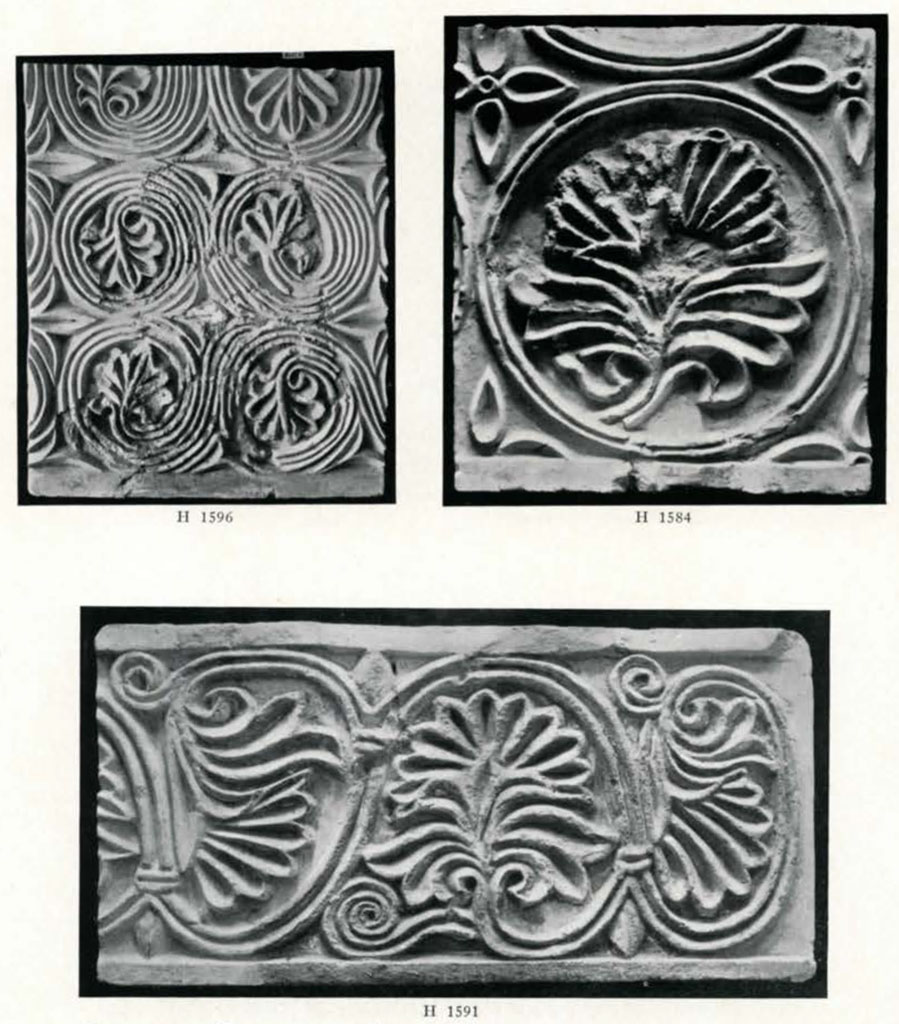
In the restoration, arches with an attractive star pattern below and well modeled archivolts at the sides span the columns. Terraced cornices are below the roof, friezes with various floral patterns decorate the walls, and slender, ornamented arches curve above the doors, while the plaques were raised again to their assumed original position above the arches and at the side walls, close to the points where they had fallen.
Minor Finds from the Palace
In the palace territory we excavated a broader but shallower area than in the case of the prehistoric deposits; nevertheless, small finds of the Sasanian period were rare.
We found no pottery vessels, but the sherds indicate that the ware of this period in this part of the empire was plain red. A small figurine fragment was made of the same ware.
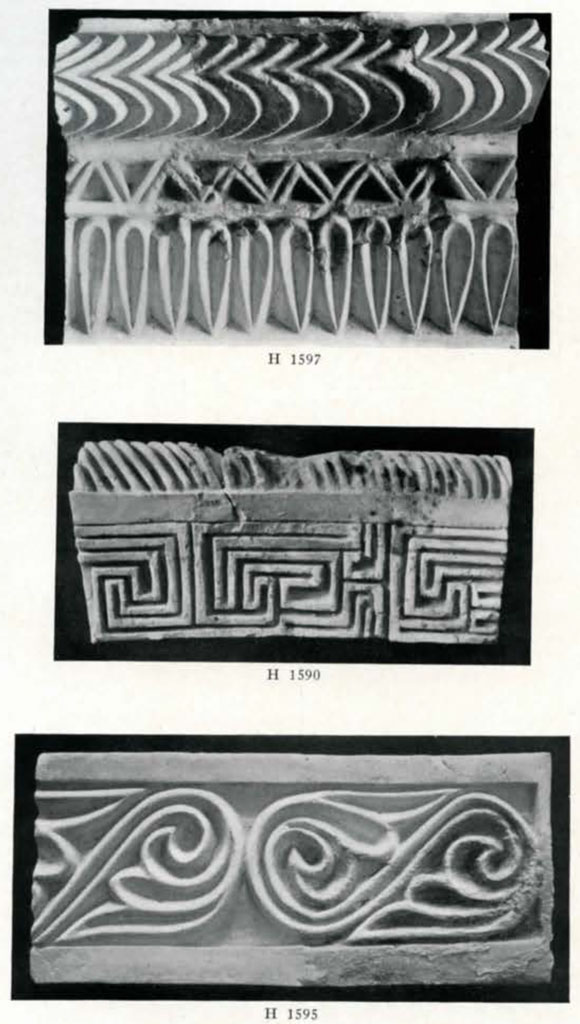
As to metal objects, iron, of course, had been introduced long before the Sasanian period. We found corroded points and a long, paddle-shaped device. We also assume that copper, by this time, was alloyed with tin, and we use the term bronze, though no chemical analysis was made, so far. Two bronze arrowheads are interesting. Perhaps they represent guide specimens. Both have three winged blades, socketed or stemmed. A problematical object (H 428) reminds one of an elephant’s head. We are not at all certain about the age of the bronze mace head illustrated. It actually occurred in the top dirt of Stratum I in the Painted Pottery Flat. It had originally two projections in form of birds’ heads. The bronze coins puzzled us considerably. There are two specimens of late Parthian times, while the rest are Islamic. No Sasanian coins appeared. As a rule, the bronze objects from the Sasanian deposit are covered with a green patina only, while the copper objects of the pre-historic strata usually show thick coats of oxide.
None of the attractive and characteristic Sasanian seals occurred. We found half a signet ring of carnelian showing the lower part of an incised human figure. A bronze ring with two tangent centered circles may also be mentioned.
Many individual beads occur in the refuse layer on top of the building. Glass, coral, and ivory appear as new materials, in addition to those known to us from the pre-historic strata. There are the widespread eye heads of glass, for example, red eyes with light gray borders on purple ground with silvery iridescence. Dragged patterns occur, too, with white, pink, and black or white, yellow and black color schemes.
As to perishable material, perforated straps of leather and small decayed fragments of carved wood were found.
The Duration of the Sasanian Occupation
We do not believe that the palace was inhabited during the entire Sasanian period. The building material was not strong enough to last more than a few generations. Perhaps it was occupied not longer than one generation and then deserted in peace.
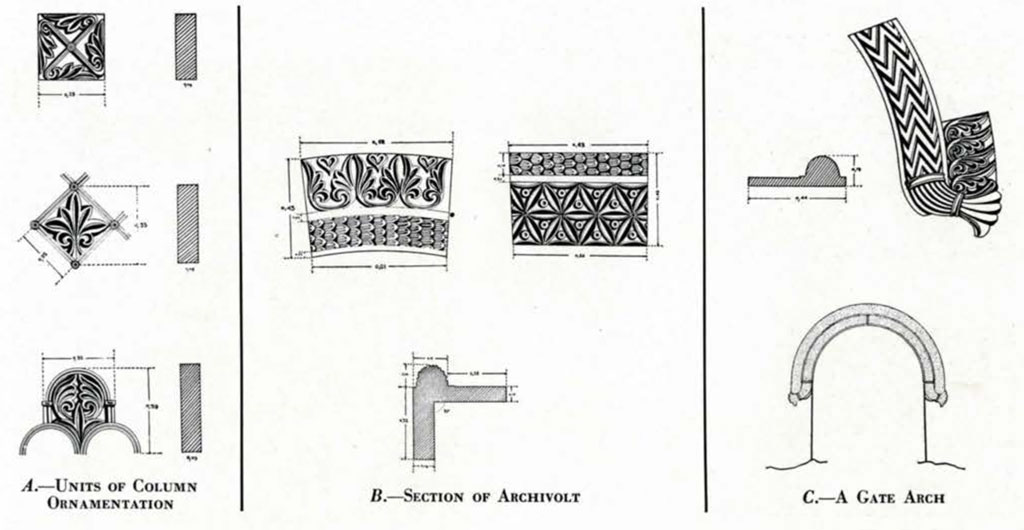
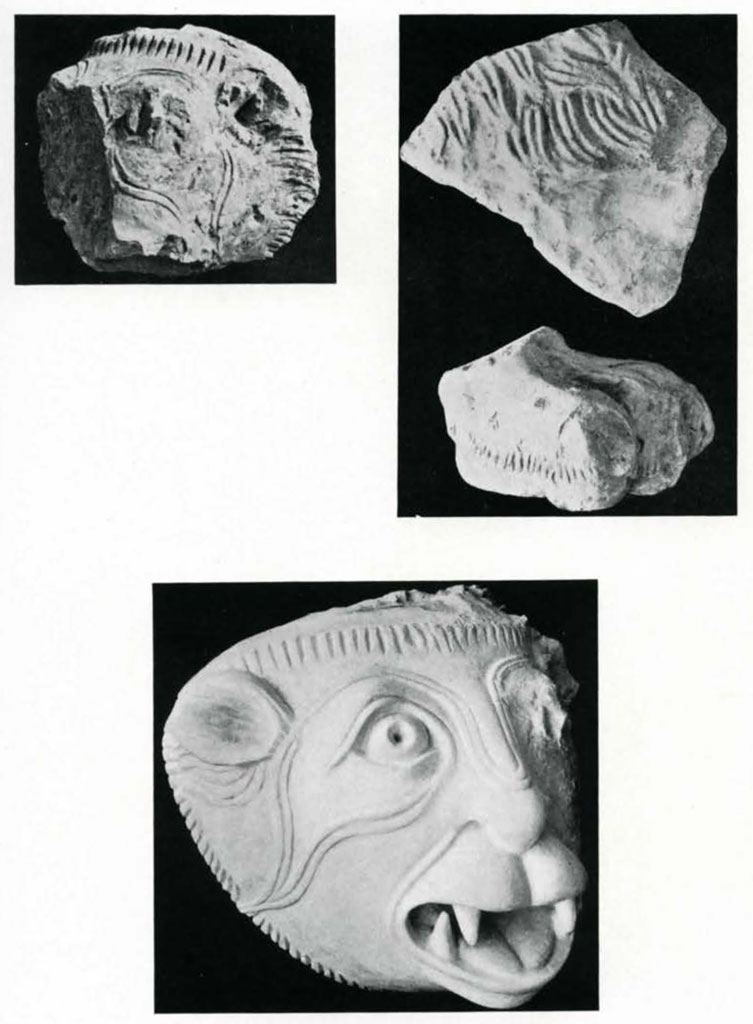
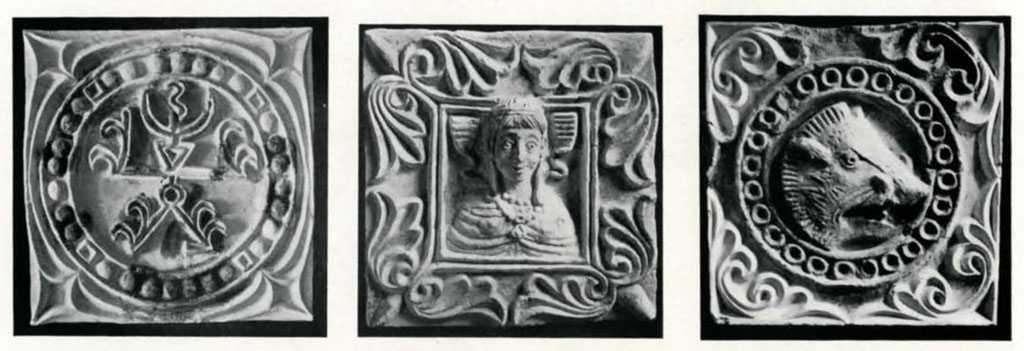
Image Numbers: 173805, 84530b, 153337, 153336
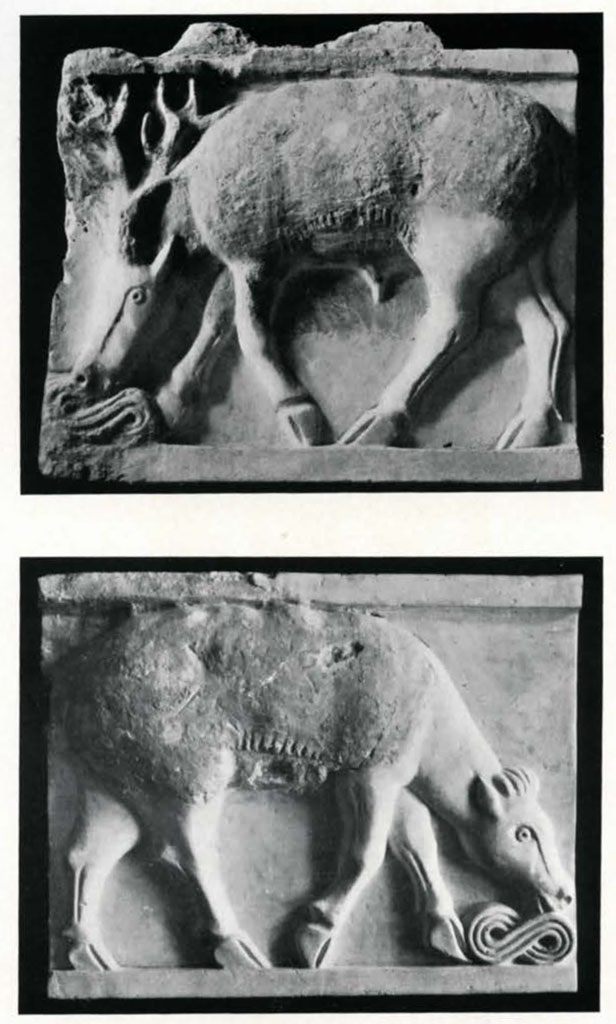
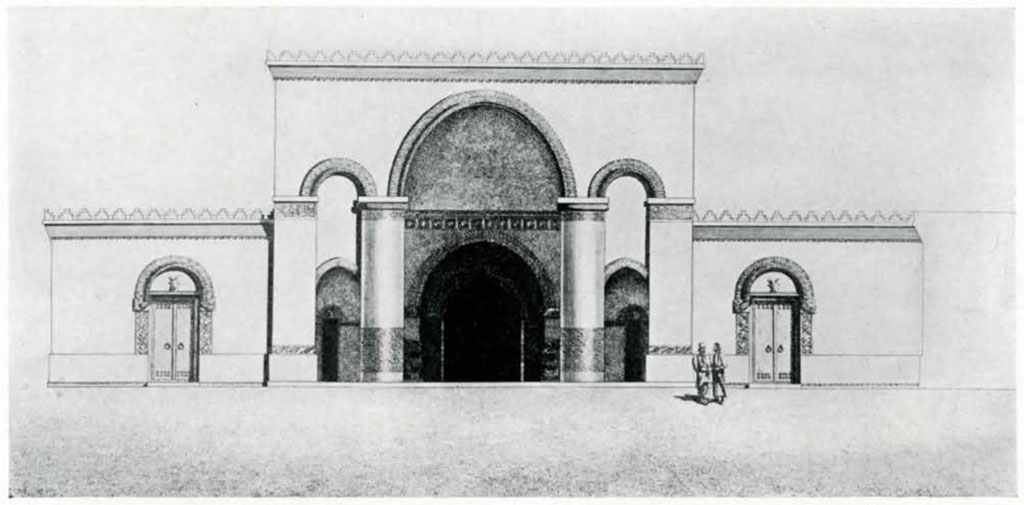
Attempted Reconstruction by I. Gerasimoff
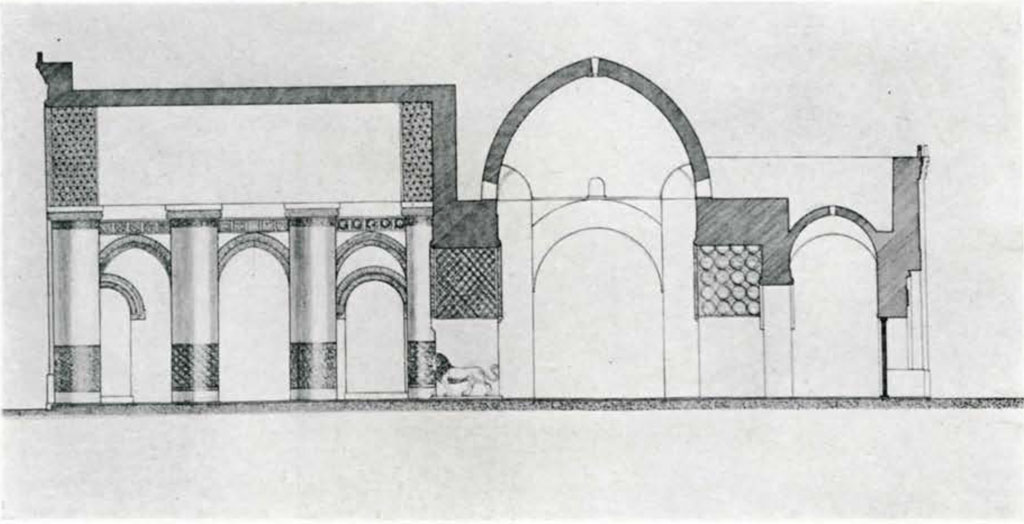
Cross Section through Center of Colonnade and Main Hall
Attempted Reconstruction by I. Gerasimoff
